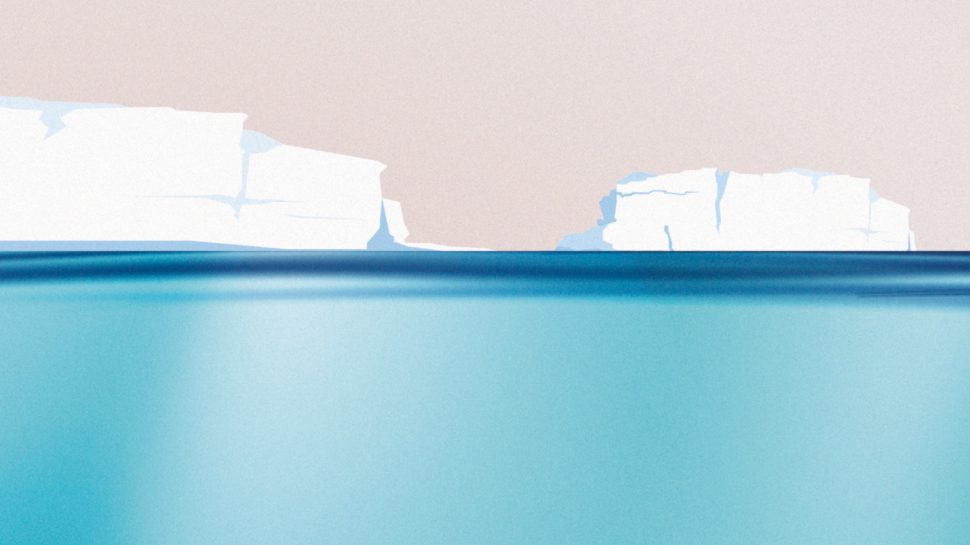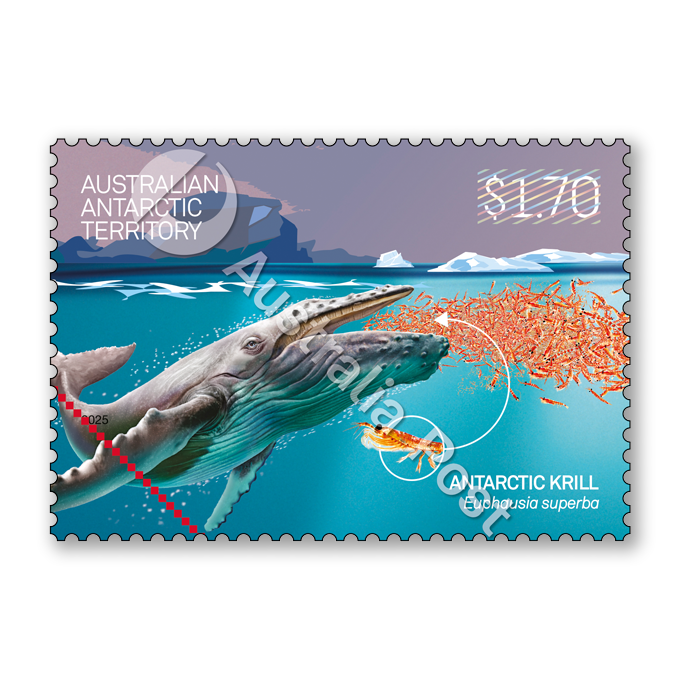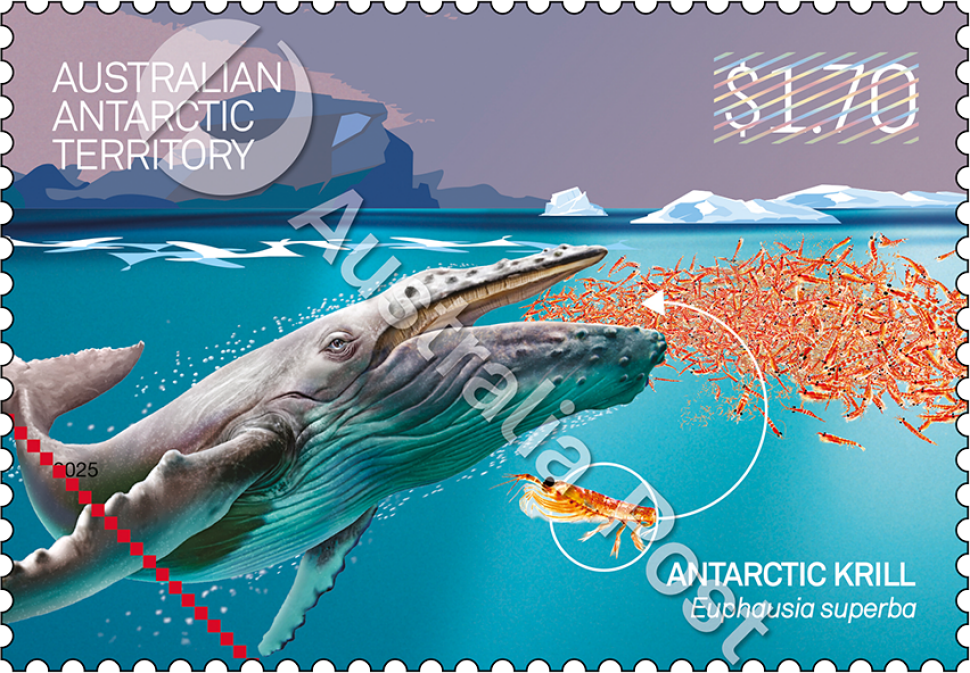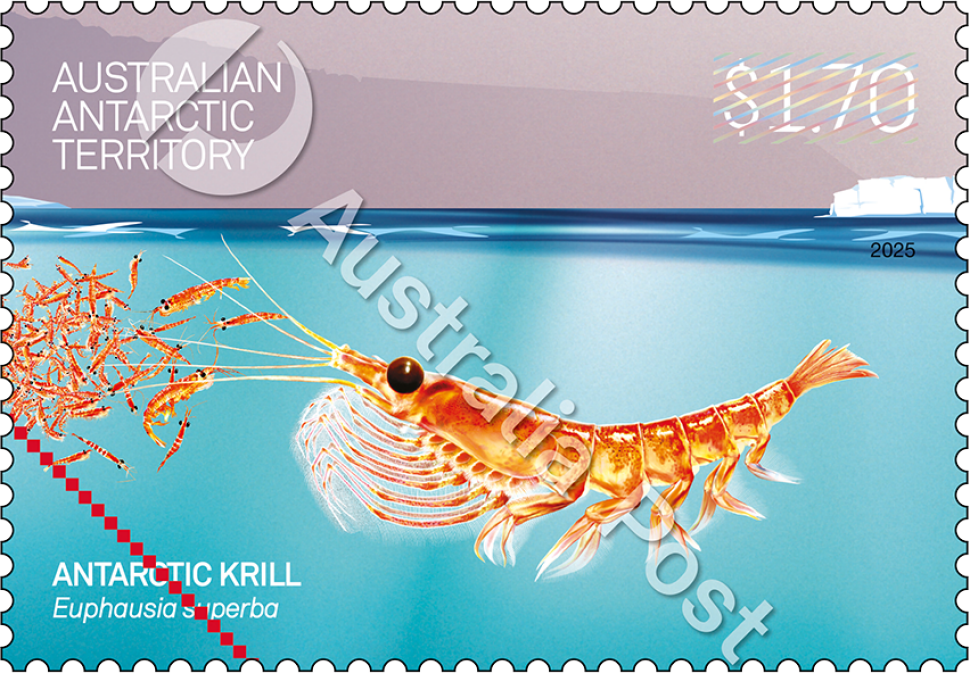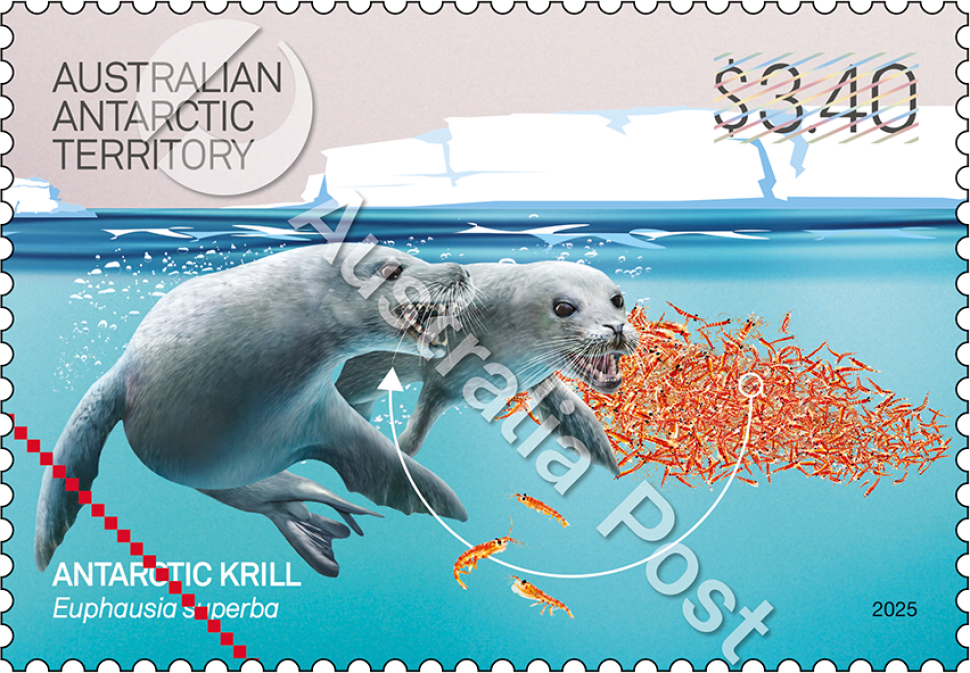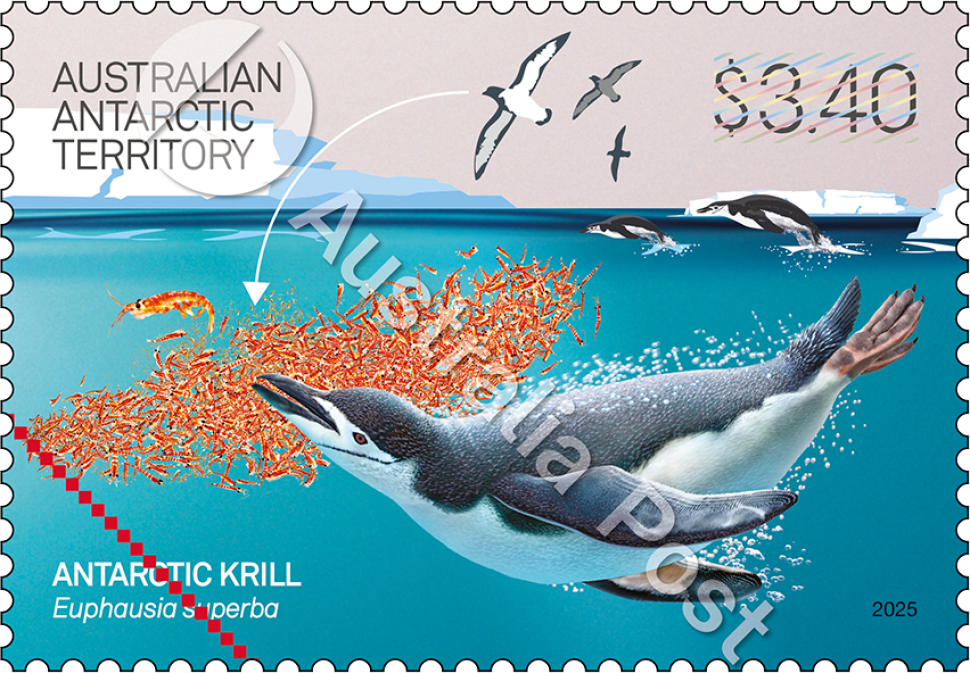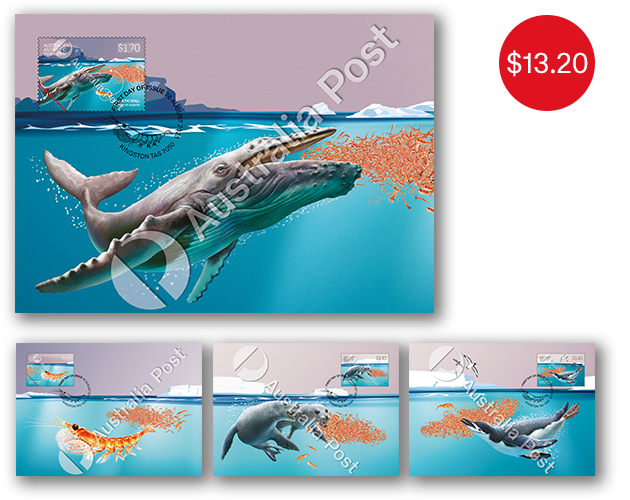Overview
Antarctic Krill Euphausia superba is the dominant species of krill in Antarctic waters. Weighing around a gram and six centimetres long, an adult Antarctic Krill resembles a small, transparent reddish prawn. They are the most abundant species in the Southern Ocean and congregate in huge swarms, kilometres wide and up to 100 metres deep. With a density of around 30,000 individuals per cubic metre, the swarm colours the sea a pink-brown.
Antarctic Krill are critical to the Antarctic ecosystem. They are essential food for most larger Antarctic animals, including those depicted on the stamps: the Humpback Whale, Crabeater Seal, Chinstrap Penguin and seabirds, including the Antarctic Petrel.
Antarctic Krill are threatened by climate change, changes in sea ice and acidification of the ocean. Changes to the krill population will affect the entire Southern Ocean ecosystem. The Australian Antarctic Division conducts research on Antarctic Krill.
Technical specifications
- Issue date
- 26 August 2025
- Issue withdrawal date
- 1 March 2026
- Denomination
- 2 x $1.70, 2 x $3.40
- Stamp, minisheet & product design
- Andrew Hogg Design
- Illustration
- Anita Xhafer
- Paper: gummed
- Tullis Russell 104gsm Red Phosphor/Blue PVA Stamp Paper
- Printer: gummed
- Southern Impact
- Printing process
- Offset lithography
- Stamp size (mm)
- 26 x 37.5
- Minisheet size (mm)
- 170 x 70
- Perforations
- 14.6 x 13.86
- Sheet layout
- Module of 50 (2 x 25)
- FDI postmark
- Kingston, Tas 7050
- FDI withdrawal date
- 24 September 2025
$3.40
Chinstrap Penguin feeding on Antarctic Krill
Chinstrap Penguins feed mainly on krill and fish. They are considered near-shore feeders, feeding close to their breeding colonies. They catch prey by pursuit-diving, using their flippers to ‘fly’ through the water. Recent evidence suggests that the number of Chinstraps is declining significantly due to reductions in krill, their main food.
The illustration is by Anita Xhafer.
Shop our Stamp Collectables
Shop our Stamp Collectables
This content was produced at the time of the stamp issue release date and will not be updated.
